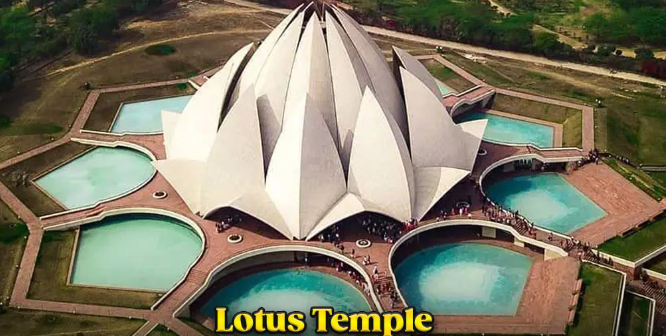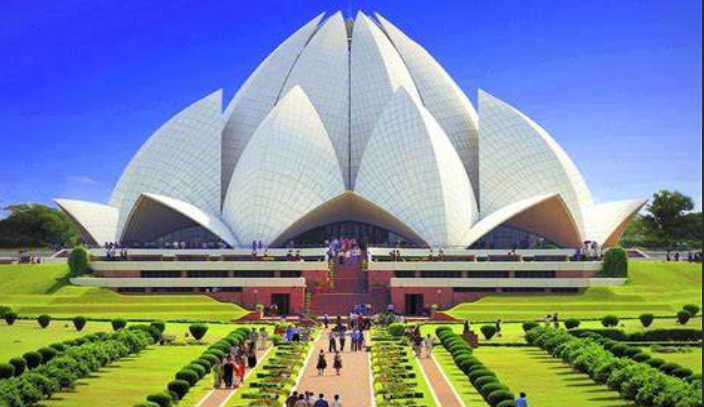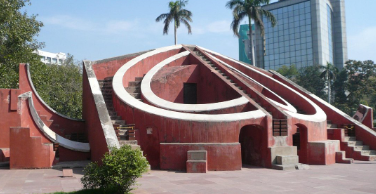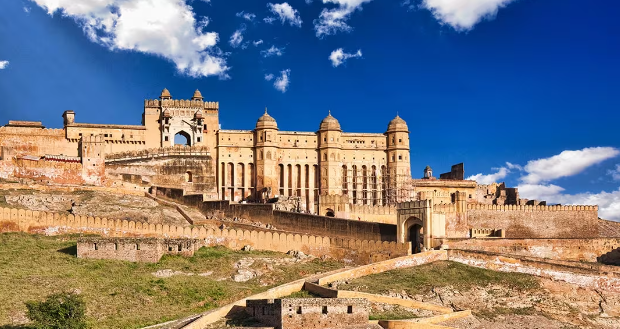Lotus Temple – Information, Facts & Timing
The Lotus Temple, situated in New Delhi, India, serves as a Baháʼí House of Worship and was inaugurated in December 1986.

About
The Lotus Temple, situated in New Delhi, India, serves as a Baháʼí House of Worship and was inaugurated in December 1986. Renowned for its distinctive lotus-inspired design, it has emerged as a significant landmark within the city. In accordance with the principles of the Bahá’í faith, the Lotus Temple welcomes individuals from all backgrounds, irrespective of their religious affiliations or other criteria. The structure consists of 27 free-standing “petals” clad in marble, organized in groups of three to create a nine-sided formation. It features nine entrances leading to a central hall that rises to a height of just over 34 meters and accommodates up to 1,300 visitors. The Lotus Temple has received numerous accolades for its architectural excellence and has been highlighted in various publications, including newspapers and magazines.
Lotus Temple History

The designer of the Lotus Temple, Fariborz Sahba, is an Iranian national currently residing in La Jolla, California, after having spent several years in Canada. In 1976, he was invited to create the design for the Lotus Temple and subsequently managed its construction. The structural engineering was executed by the British firm Flint and Neill over a period of 18 months, while the construction was carried out by ECC Construction Group, a subsidiary of Larsen & Toubro Limited, at a total cost of $10.56 million. A significant portion of the funds required for the land acquisition was generously donated by Ardishír Rustampúr from Hyderabad, Sindh (Pakistan), who bequeathed his entire life savings for the temple’s construction. Additionally, a part of the construction budget was allocated to establish a greenhouse aimed at studying native plants and flowers suitable for the site.
Rúhíyyih Khánum laid the foundation stone of the Lotus Temple on 19 October 1977 and officially dedicated it on 24 December 1986. The dedication ceremony attracted 8,000 Baháʼís from 107 different countries, including approximately 4,000 Baháʼís from 22 states across India. The temple was opened to the public on 1 January 1987, witnessing over 10,000 visitors on its inaugural day.
Also Read: Hawa Mahal Architecture
Lotus Temple Structure
All Baháʼí Houses of Worship, including the Lotus Temple, exhibit certain architectural characteristics, some of which are delineated in Baháʼí scripture. ʻAbdu’l-Bahá, the son of the religion’s founder, stated that these Houses of Worship should be nine-sided and circular. Although every existing Baháʼí House of Worship features a dome, this element is not considered a fundamental aspect of their design. Furthermore, Baháʼí scripture prohibits the display of pictures, statues, or images within the House of Worship, and the inclusion of pulpits or altars as architectural components is also forbidden; instead, readers may utilize simple portable lecterns.
The design of the House of Worship in New Delhi draws inspiration from the lotus flower, consisting of 27 free-standing marble-clad “petals” arranged in clusters of three to create nine sides. The shape of the temple carries symbolic and inter-religious significance, as the lotus is frequently associated with purity, sacredness, spirituality, and knowledge, holding particular spiritual importance in India. The nine entrances of the Lotus Temple lead to a central hall that stands 34.3 meters tall, accommodating 1,300 individuals and capable of hosting up to 2,500 people. The temple spans a diameter of 70 meters. Its exterior is crafted from white marble sourced from Penteli mountain in Greece, the same material used in the construction of numerous ancient monuments, including the Parthenon, as well as other Baháʼí structures. The Lotus Temple complex, which includes nine surrounding ponds and gardens, covers an area of 26 acres. An educational center adjacent to the temple was inaugurated in 2017.

Lotus Temple Timings

Facts & Information
- Lotus Temple Built in: November 13, 1986
- Material used: White marble
- Lotus Temple Height: 34 meters
- Lotus Temple Architect: Fariborz Sahba
- Type: Expressionist architecture
- Number of petals: 27 lotus petals
- Lotus Temple Hall Capacity: accommodates 2500 people
- Lotus Temple Location: Near Kalkaji Temple, East of Nehru Place
- Nearest Metro Station to Lotus Temple: Kalkaji Mandir
- Lotus Temple Address: Lotus Temple Rd, Shambhu Dayal Bagh, Bahapur, Kalkaji, New Delhi, Delhi 110019
Share this content:














1 comment